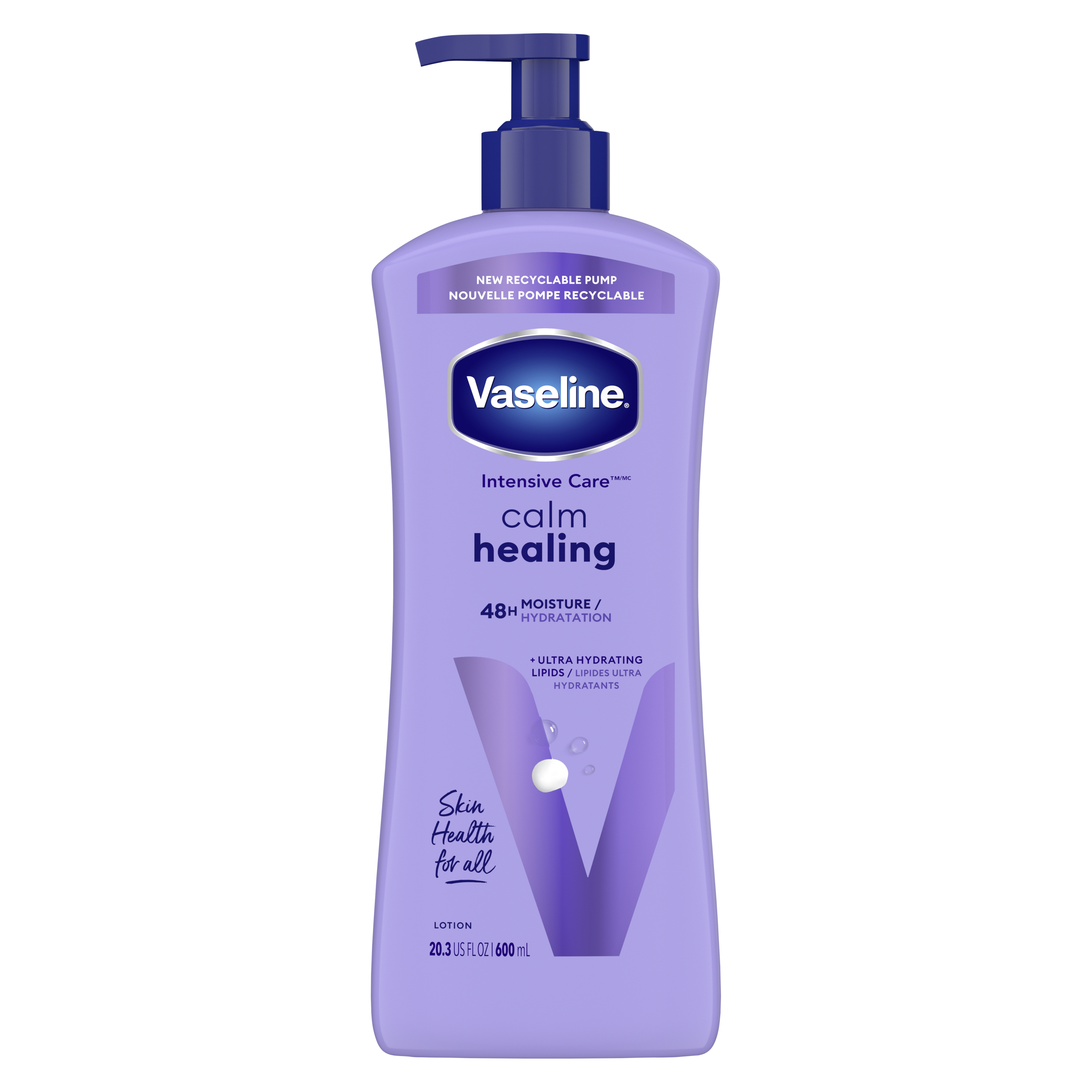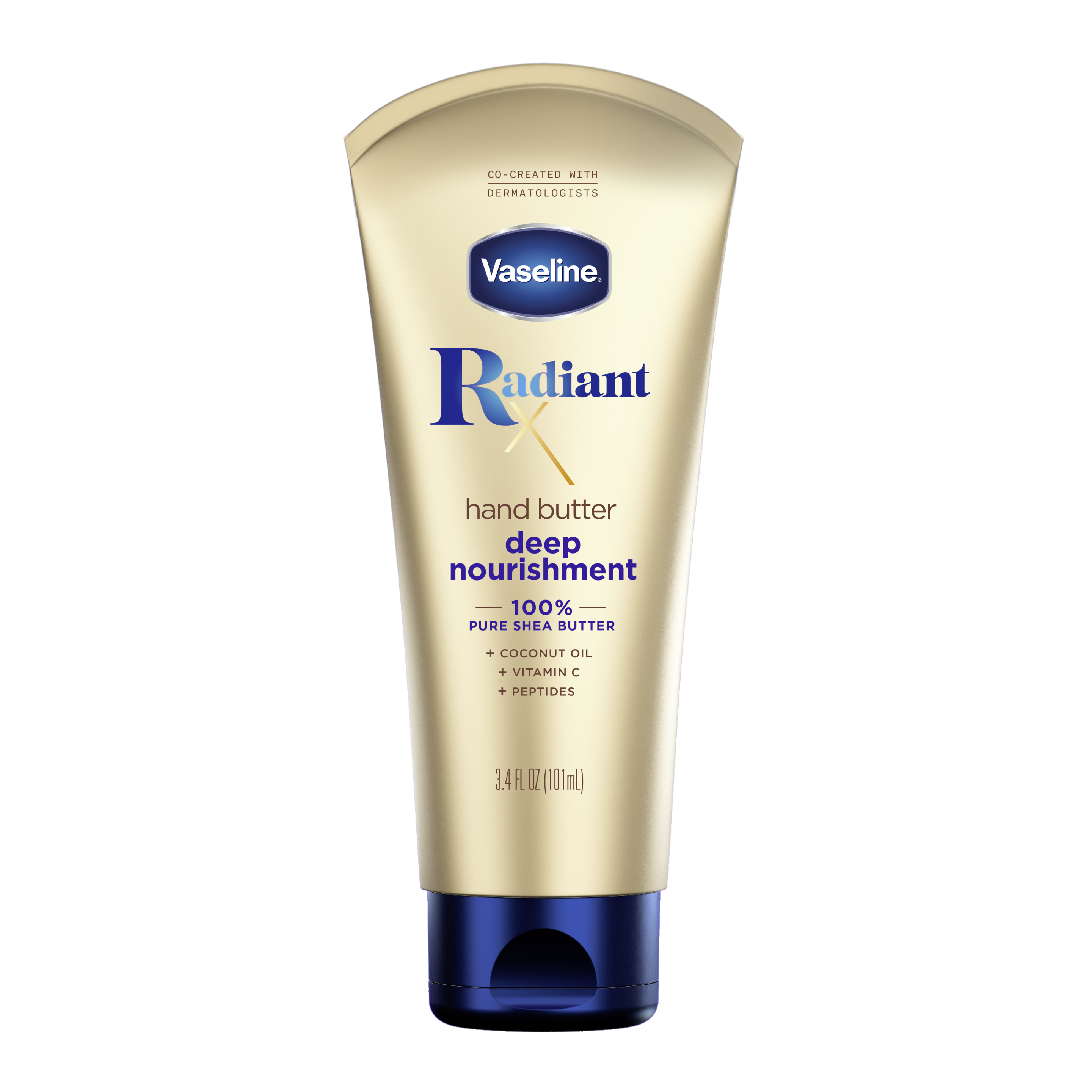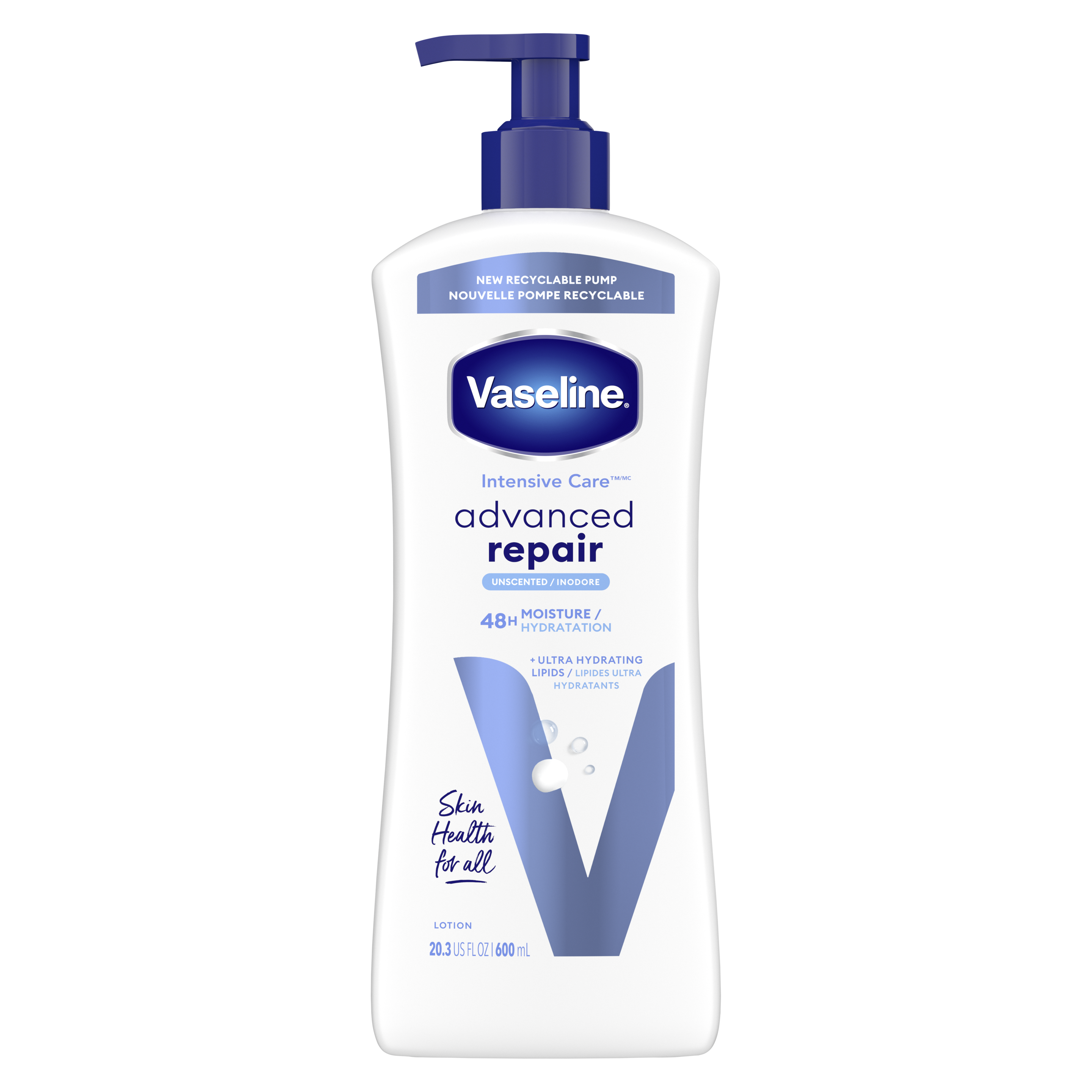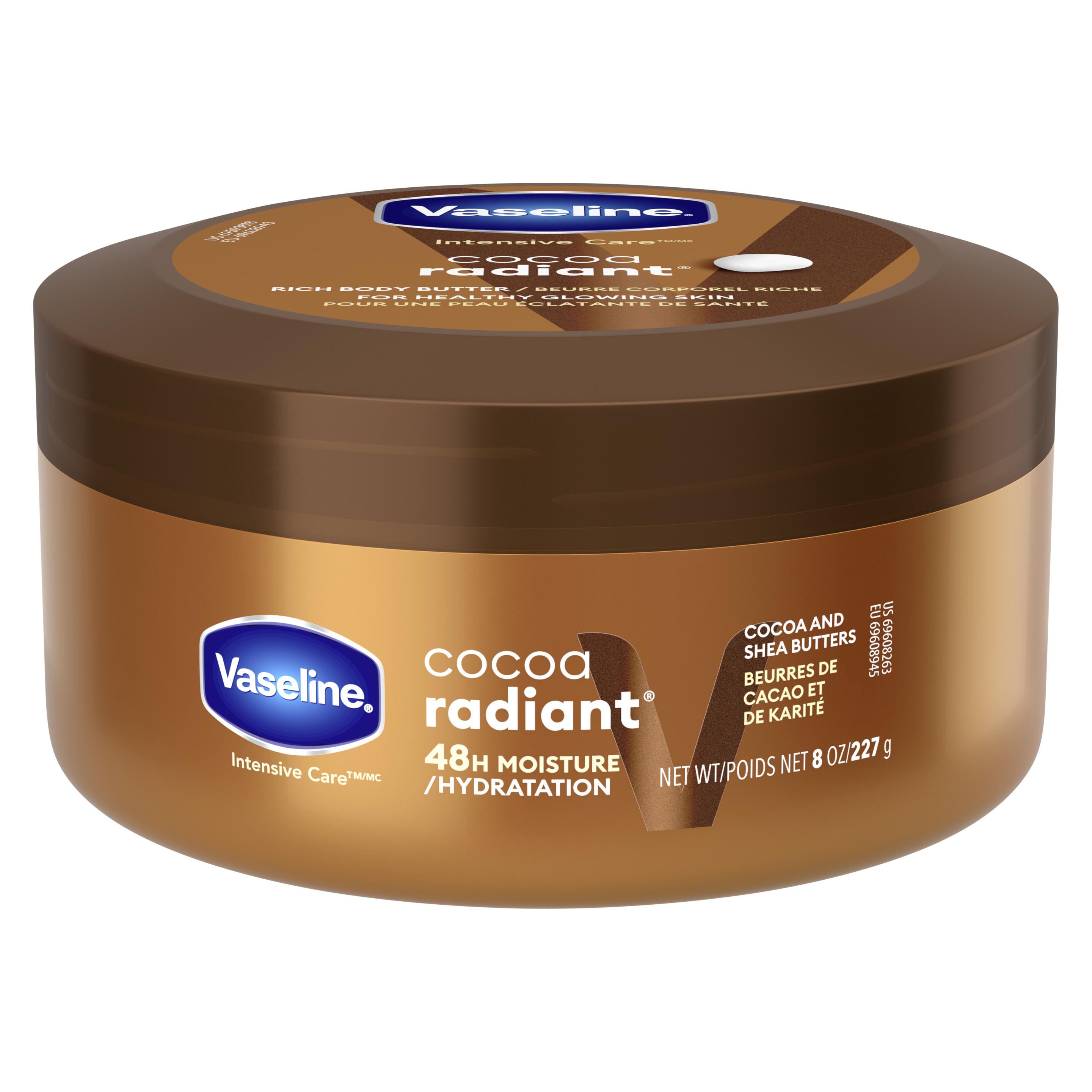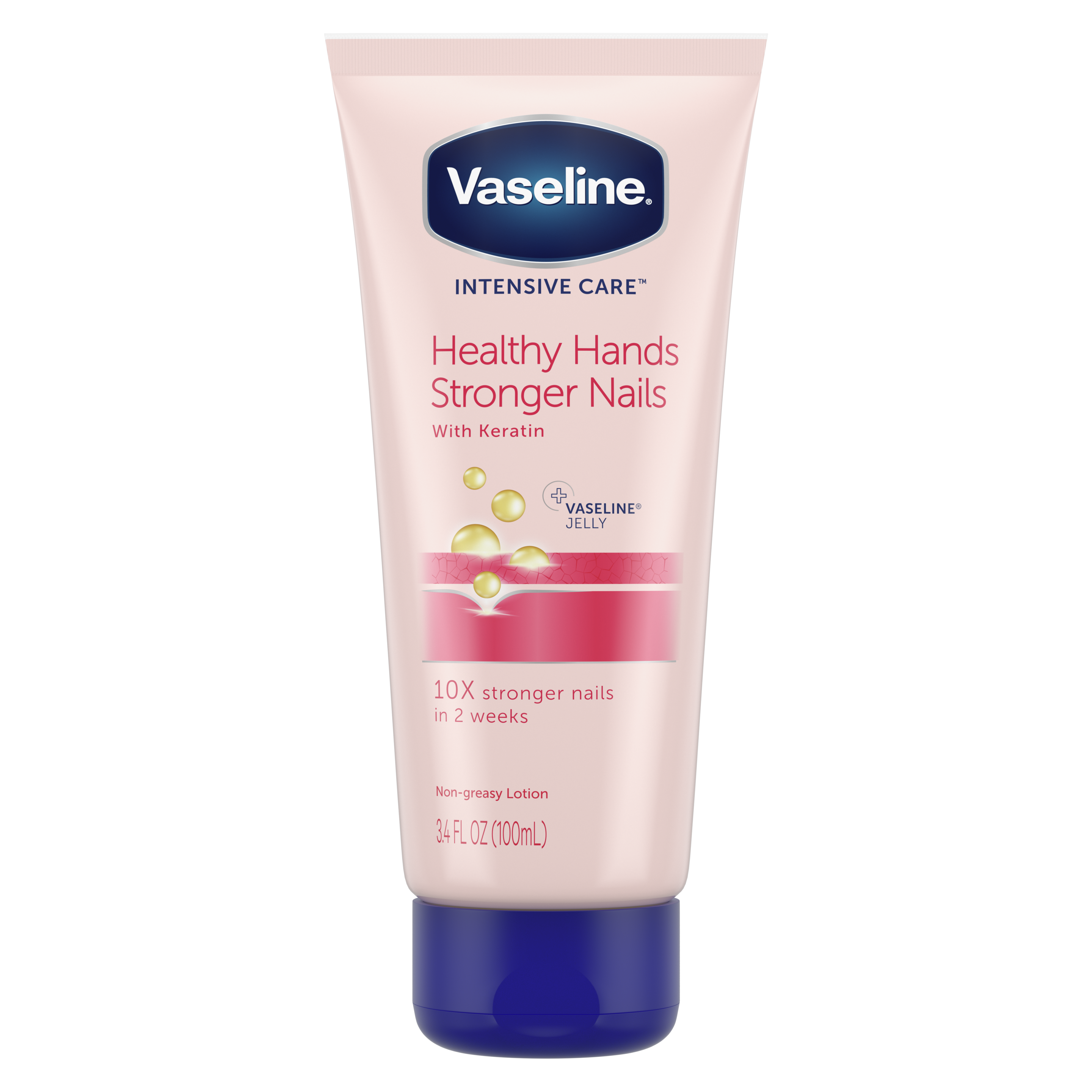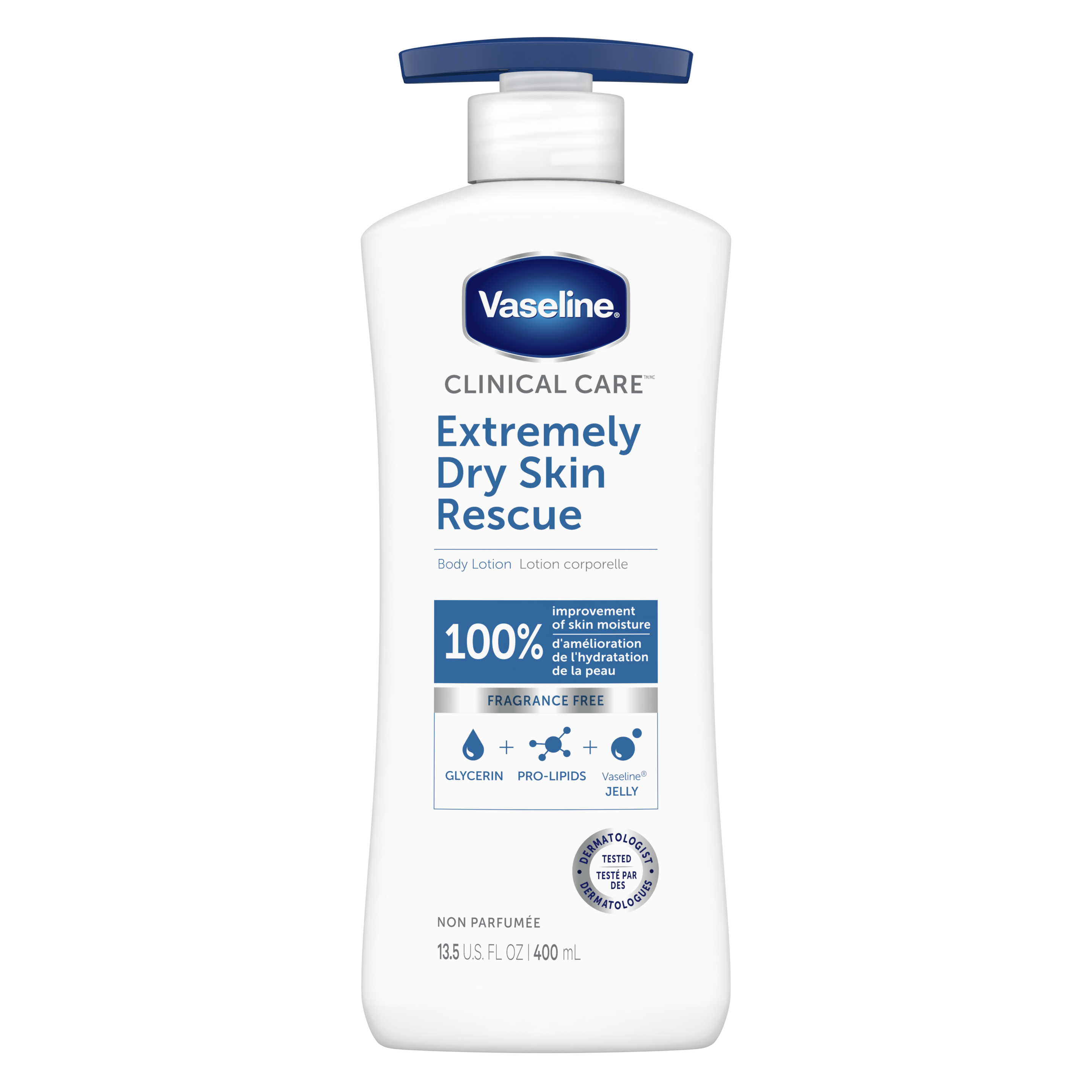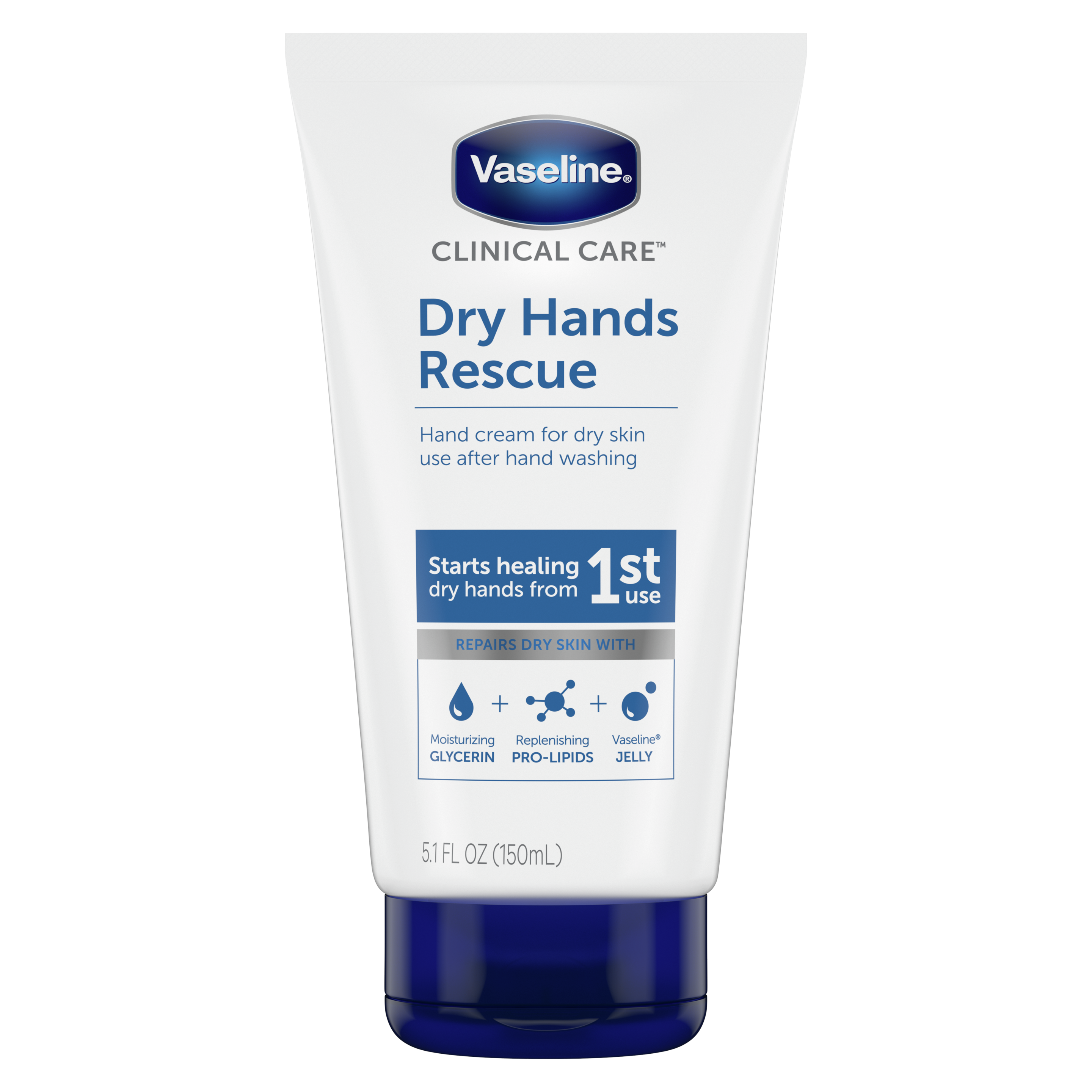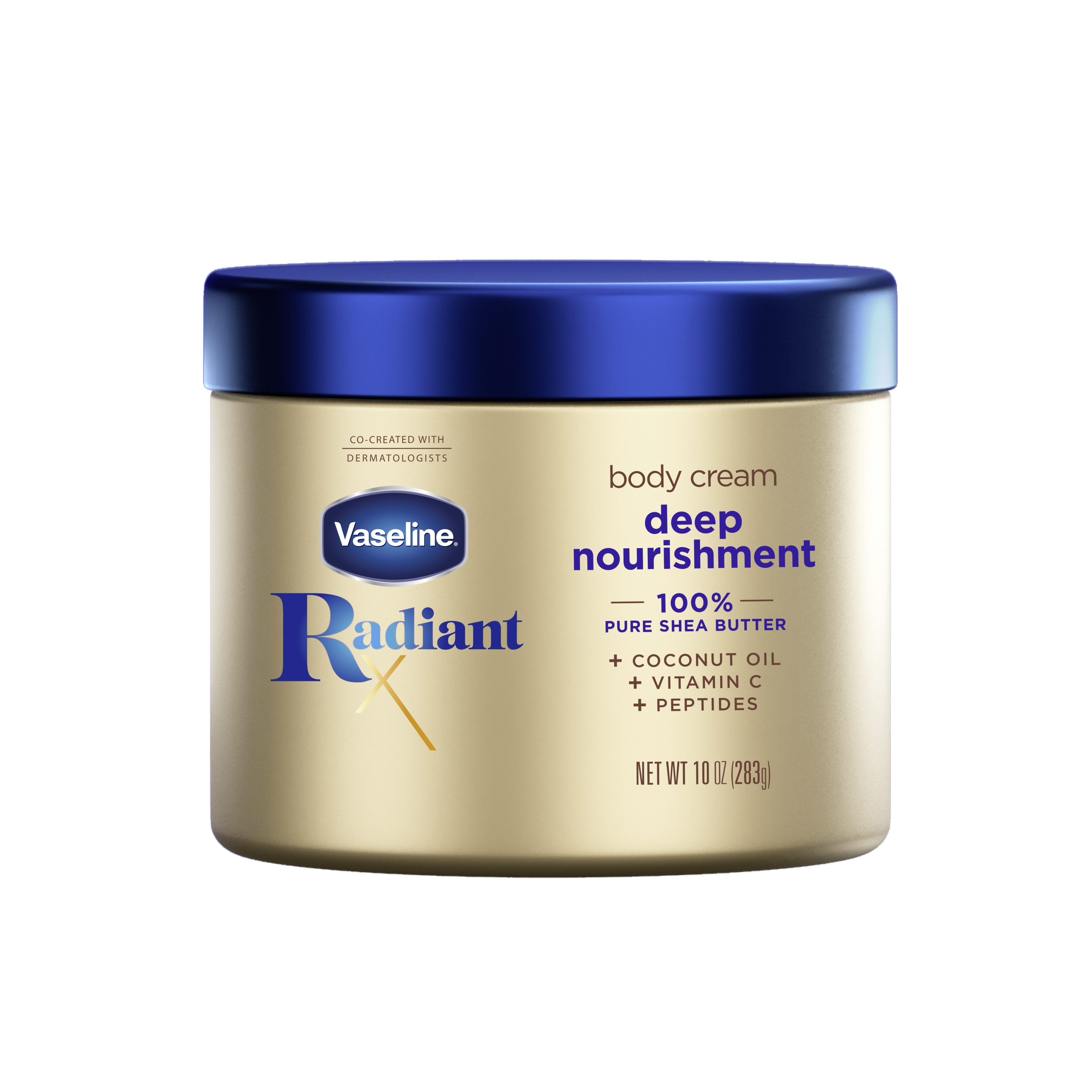Skip to content
Winter dry skin SOS? The colder months can take a toll on our skin, often leaving it dry, rough, chapped and flaky. And this can affect all areas of the body, including the face, hands, stomach and legs.
Ever wondered what causes skin to become dry, especially in the colder months? Or what you can do to prevent this from happening?
Here’s the lowdown on dry skin in winter — what causes it, how to care for it at home and when to seek medical advice.
Why does skin get dry in winter?
As the icy, cold weather arrives and dry skin starts to appear, you may find yourself asking why is my skin so dry in winter?
When temperatures plummet, there’s less moisture in the air, causing our skin to become dry more easily. Plus, while having the heating or fireplace on in the winter can make indoor spaces feel cozy, heating devices can also reduce humidity levels in the air, causing the uppermost layer of your skin (the stratum corneum) to dry out.
Symptoms of dry skin in winter
The most common symptoms of dry skin are irritation, flakiness, roughness, itchiness, stinging and cracks or scales that appear on the surface. Dryness can affect different parts of the body in various ways, for example dry hands can feel itchy with noticeable fine lines, the skin on the face can feel tight and uncomfortable, and the feet can feel rough and cracked.
If you already have a skin condition that makes you prone to dry skin, like psoriasis or eczema, winter dryness can make matters worse.
How to combat dry skin in winter
Face
- Do: Moisturize every day
Wondering how to cure dry skin in the winter? Using a good moisturizer is essential. Ideally, moisturize twice a day (in the morning and evening). This boosts your skin’s hydration, helping it seal in moisture, and softens dry, flaky skin.
To help seal in moisture overnight, try slugging. Once you've applied your usual skincare products, apply a thin layer of Vaseline® Original Healing Jelly. This helps to lock in your other skincare goodies as you sleep, so you can start the day with moisturized skin.
Every good moisturizer will have one or more of these three restorative ingredients: Humectants (that draw in moisture from the environment and hold them in the skin's surface); occlusives (that form a barrier against transepidermal water loss); and emollients (that help retain water in the skin and help repair damaged cells on the skin’s surface).
- Don’t: Over-exfoliate
This is your reminder to go easy on exfoliants and scrubs. The right amount of exfoliation can help shed dead cells on the surface of the skin, promote cell turnover and boost the efficiency of your skincare products.
Over-exfoliation, on the other hand, must be avoided at all costs. “Overuse of chemical or mechanical exfoliants can be a one-way ticket to ‘Drysville’,” warns board-certified dermatologist Dr. Mona Gohara. “Respect the barrier, and do not scrub off healthy skin cells.”
Aim to exfoliate once or twice a week, and always follow with a moisturizer.
Body
- Do: Apply lotion before bed
Here’s a hack for dry skin in winter: Slather your body with lotion before you snooze, allowing your skin to lap up some much-needed moisture overnight.
Our go-to lotion for overnight pampering is the Vaseline® Intensive Care™ Calm Healing Lotion — a relaxing lavender scented lotion that soothes and restores dry skin.
- Don’t: Ignore flare-ups
“Sometimes dry skin is a sign of some other issue such as eczema, psoriasis, or a thyroid imbalance,” Dr. Gohara points out. “See a board-certified dermatologist to examine the skin and offer a skilled assessment as to what can be done to alleviate the problem.”
Hands
- Do: Wear gloves outside
Brrr, it’s cold outside, so don’t forget this winter dry skin remedy when you’re out and about. Gloves will keep your hands warm and protect them from the dry air and harsh winds.
- Don’t: Wash your hands with harsh soaps or hot water
If you have dry skin during winter, it’s important to be mindful of your hand-washing habits: how frequently you wash them, the temperature of the water and the soap you use. Harsh hand hygiene products can damage the top layer of the skin and decrease its water-binding capacity.
Similarly, washing with water that’s too hot can also be damaging.
Instead, wash your hands in cold or warm water, with a mild soap, and then follow up with a moisturizer. We love Vaseline® Radiant X Deep Nourishment Hand Butter, enriched with 100% pure shea butter, vitamin C, coconut oil and peptides for gorgeously soft hands.
Lips
- Do: Always keep a lip balm handy
Your lips can become chapped and dry in winter quicker than the rest of your body. This is primarily because the skin on your lip is thinner than on the rest of your body, and it also don’t contain sweat or oil glands (meaning it can’t self-replenish with moisture).
Investing in a lip balm you love is always a good idea. Try the Vaseline® Lip Therapy® Aloe Vera Stick. It provides dry lips with essential hydration while locking in moisture and instantly soothing skin and is easy to reapply when you’re on-the-go.
- Don’t: Lick your lips
We understand the urge to lick your lips when they feel dry, but it will only make matters worse.
Saliva contains digestive enzymes that can damage the delicate skin of the lips, leaving it drier than it was before.
Read next: Lip Care 101: Discover Your New Lip Care Routine
What is the best moisturizer for dry skin in winter?
Picking the right moisturizer for you depends on personal preference and what your skin needs. Choose a texture that works for you. For example, lotions are lighter than creams, and the latter is a better pick if your skin is very dry.
If the cold weather has been particularly hard on your skin, you can’t go wrong with the Vaseline® Healing Jelly Original. It has a hypoallergenic, non-irritating formula that has even been awarded the US National Eczema Association Seal of Acceptance for being suitable for symptoms of sensitive skin and dryness associated with eczema.
What is the fastest way to hydrate your skin?
To quickest way to deliver moisture to your skin? Apply your moisturizer within minutes of drying off after a shower or bath or washing your face or hands. When lotions or creams are applied to damp skin, they help trap existing moisture in the skin.
“You should pat, and not rub the skin dry with a soft cotton towel and then apply your favorite moisturizer,” explains Dr. Gohara. “This locks in the ambient humidity and the water from slightly damp skin.”
Choose a lotion that’s non-greasy so you can slip into your clothes immediately after, like the Vaseline® Intensive Care™ Advanced Repair Unscented Lotion that absorbs into your skin quickly. Plus, the formula is unscented, so it won’t irritate sensitive skin (or alter the scent of any fragrance you may want to spritz on after!).
If you prefer scented creams, reach for the Vaseline® Intensive Care™ Cocoa Body Butter, which has a warm cocoa fragrance and a rich, buttery texture that helps soothe and revive cold weather-induced dry skin.
Preventing winter dry skin
Wondering how to prevent dry skin in winter naturally? Below, we list some easy lifestyle changes you can make to prevent rough, scaly skin in the wintertime.
Switch up your skincare routine during winter
As the seasons change, make some necessary swaps in the products you use every day. Ditch harsh, foaming cleansers for creamier ones. “The key is to use a hydrating, non-soap cleanser that will deposit moisture as it does its job,” explains Dr. Gohara. “Bonus points if ceramides or other skin-identical lipids or proteins are on the ingredient list.”
She adds that it may also be helpful to switch to heavier creams in the colder months. Consider fragrance-free formulas if you have sensitive skin.
Take shorter showers
“Long, hot showers are good for the soul, but not so good for the skin,” Dr. Gohara explains. She advises timing yourself to ensure your shower is no longer than 8 minutes. Also, to optimize hydration, aim for warm, and not hot water showers.
Apply sunscreen daily
Newsflash: we’re exposed to a high level of UV rays from the sun all year round. That means even in winter, it’s essential to protect our skin with SPF 30 sunscreen, so that these harmful rays don’t dry out your skin.
Use a humidifier
Winter means the heating comes on more often. However, heating devices in your home can make dry skin worse and compromise your skin barrier.
But there’s a solution: If you’re using the central heating, fireplace or space heaters in the winter months, invest in a humidifier. “Humidifying the air can help to soften the skin and cushion the excess heat blow to the skin barrier,” Dr. Gohara explains.
While winter and dry skin come as a package deal for many people, luckily, there are simple steps you can take to prevent this.
However, remember that if your dry skin in winter changes quickly and displays signs of infection, redness and swelling, always seek medical advice.
These articles provide general tips and information about improving skin health. They have been written by health and beauty writers. They have not been written by health care professionals and, as such, don’t constitute medical advice. If you have a serious skin condition, please consult a medical professional.




